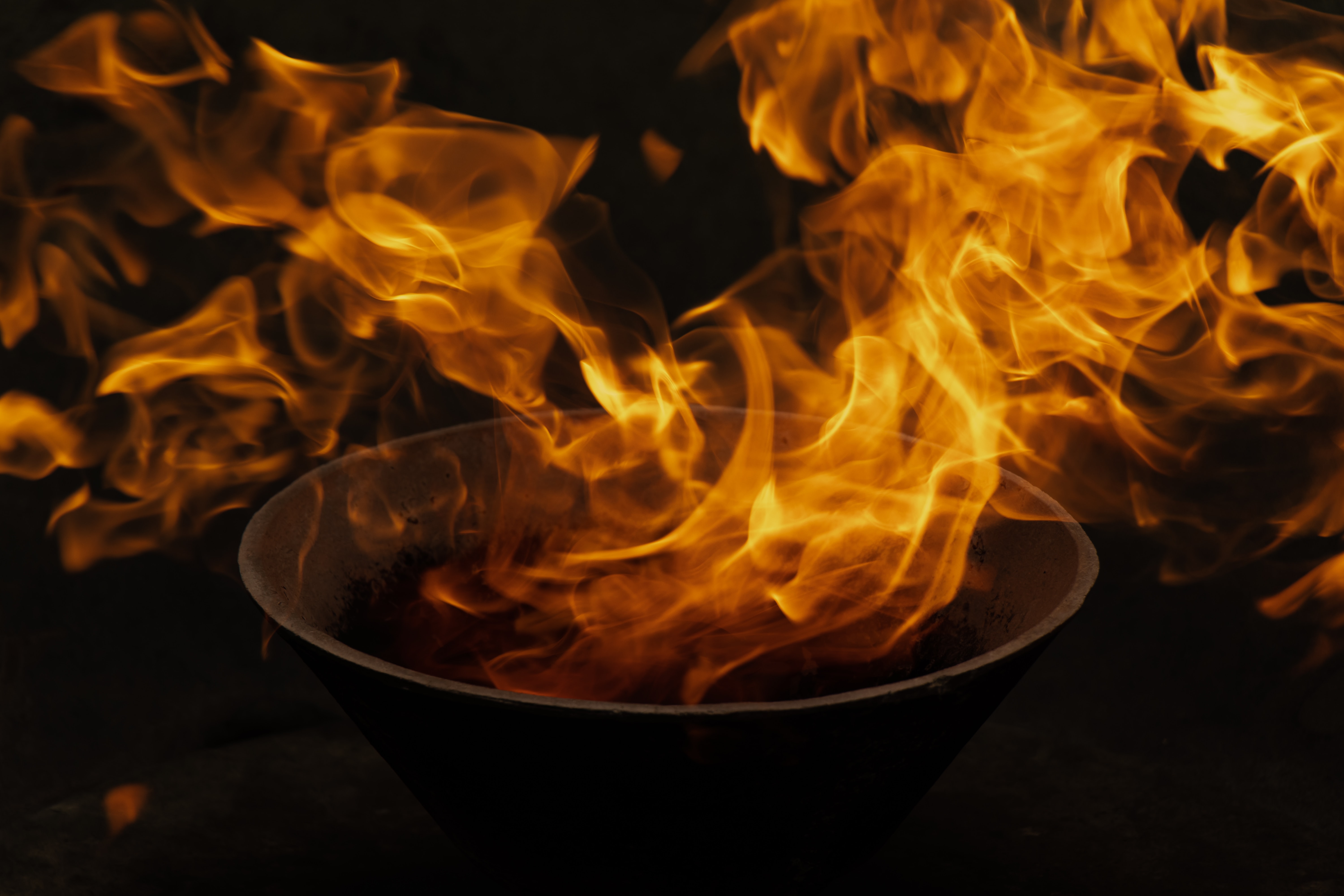Selected themes from the inspiring book, My Father My King by Rabbi Zelig Pliskin , published by Artscroll/Mesorah.
Experience My Presence:

Take care of your health:

Forgive

Use your money to elevate yourself spiritually

Selected themes from the inspiring book, My Father My King by Rabbi Zelig Pliskin , published by Artscroll/Mesorah.
Experience My Presence:

Take care of your health:



There are two popular holidays in the Jewish calendar that can be celebrated even as we perform our ordinary weekday activities. Even though they have no special Yom Tov or Shabbos requirements they do much more than just commemorate events in history. Chanukah with its lighting of the menorah with, ideally, olive oil and Purim, in which wine is the drink of choice, have concealed within these days of joy and celebration, like olive oil that is extracted from olives and wine that exudes from grapes, heretofore untapped hidden powers that can aid us to help to rectify and elevate the entire creation.
How is this achieved and why is it necessary? When Adam and Chava ate the forbidden fruit, violating the specific commandment of the Creator, the yetzer hara became internalized causing an admixture within all mankind of tov and rah. Since four of their five senses – of touch (feeling), sight, hearing and taste – acted as accomplices to the primordial sin, we need to now use those very same senses, in the performance of mitzvos and acts and chesed, to rectify this cosmic error which continues to reverberate throughout the generations.
Partially because of a lack of enough sensitivity and an increase in senseless enmity (sinas kinom), that was a major cause of the destruction of the Bais HaMikdash, our Sages wisely gave us specific additional mitzvos that focus on strengthening our sense of awareness thereby reawakening our sensitivity in our relationship others. How can this best be achieved?
We can learn how to rekindle the proper feelings between each other, through the teachings of the holiday of Chanukah which call for bending over and lowering ourselves, as the naros are ideally below ten tefakim, so as to be able for the flame of the helper candle, known as the shomus, to touch the Chanukah neros until that are lit up. So too in our relationship with people sometimes it is necessary to bend over in order to share our soul’s “flame” help kindle – ie. inspire – our brethren. The “message” hidden within the Chanukah lights is so enlightening that it even has the ability to remove the surrounding darkness for those who are still out in the shuk – ie. – the marketplace of spiritual obscurity, thereby inspiring them to be included in the mitzvah when they joyously proclaim: (Sheasa nesim la-avosanu ba-yamim ha-haim bizman ha-zeh. that Hashem made miracles for our forefathers in this time.
After Chanukah rekindles our feelings for others and gives us clearer insight on how to be best be of help to them, Purim in its own unique way teaches us not only how to be good listeners, while hearing the reading of the Megilla, but to also learn how to hear – ie. understand – the true needs of others so as to best share our blessings with them. How is this achieved? We accomplish this through the other three mitzvos of the day which are sending gifts – of food that need no preparation – to friends, giving charity generously and opening the “doors” of our homes and hearts for a tasty meal and flavorable experience.
Sending readymade foods to friends perhaps on a deeper level sends a message to all our acquaintances that just as this food needs no preparation, we are always ready and prepared to accept you just as you are.
May we, through these mitzvos, once again regain the proper level of love and respect between all of us, thereby meriting the final Bais HaMigdash soon in our days.
There is a painting technique that involves placing two layers of paint on a canvas using any colors, designs or themes that you would like on each of the layers. The first step is to paint in the background. After it dries, place tape on the areas you wish to cover. Press the tape down carefully so that the edges of the tape are smooth. Paint a second layer on top of the first, insuring that you have completely covered the tape. Then, when that second layer is dry — remove the tape to reveal parts of the first layer underneath. Removing the tape takes a bit of effort — first to find it and then to peel it off.
Did you plan for what you now see? Were you trying to create an integrated design using both layers or were you prepared to be surprised. There are several possibilities. You might like the painting you created on the top layer– it might be nicer than the lower layer and it might not be improved or enhanced when the bottom layer shows through. But you also worked to make that bottom layer nice as well. And since it was a fresh canvas at that time, the colors were pretty vivid and memorable.
So you peel off some of the tape.And you don’t like the result. It’s not one coherent whole, its a mish mash of color shape and form. It’s not here or there. You want to fix it so you paint over the exposed areas. But now the top layer has lost its appeal because you are not experienced enough to find the original colors that were so nicely mixed and place them in just the right parts of the painting. Now you feel you have ruined what you created and want to get rid of the little painting– just leave it somewhere and forget it.
You of course realize that our purpose here is not to give a painting class but to draw an analogy. Those of us who are baalei teshuva or gerim have painted in a background or perhaps it is more accurate to say that we were offered a background that was painted for us. It might be quite detailed and extensive. It happened when we were young and the colors very vivid in our hearts and minds. It may have covered quite a bit of the canvas of our lives. In fact we might not have planned initially to think in terms of another perhaps totally different layer of life, but at some point were inspired to start to work on it — and we began taping. For this taping process we had much more choice in terms of position and shape of the tape but were we thinking of what we would do after this taping over process was completed?
When we tape over are we thinking about integrating the two designs. When we color our lives in the second layer after teshuva or geirus are we considering whether it will match blend or integrate with the first layer. How can we do that so as to make one layer enhance the next.
The simple answer is truth and acknowledgment. The antithesis is denial and falsehood. There is an entirely new creation before you, but it is not just a composite of old and new but its own essential self.
Reb Shaya came to our door one evening and asked if he could tell us a story. He knew that we “collect” incidents that reveal the amazing intricacies of Hashem’s hashgachah pratis and we are especially inspired by examples of outstanding emunah and bitachon.
When we heard Reb Shaya’s account of what he lived through and witnessed during the Holocaust, we wanted to ensure that this amazing tale of mesirus nefesh does not suffer the fate of many other stirring stories of incredible heroism in the service of Hashem that no doubt took place in the raging inferno of Europe in World War II but are lost to us.
We hope that this story of how one Jew’s extraordinary courage and sacrifice reveal the wondrous workings of the Creator’s awesome master plan will serve to illuminate the path for succeeding generations.
At the tender age of fifteen, Reb Shaya was deported to Auschwitz and from there to a work camp in Eastern Germany. He considered himself relatively fortunate because, unlike many others, he found himself in a camp where the guards did not beat the prisoners senseless or awaken them cruelly in the middle of the night. Nevertheless, they were fed little and suffered constant hunger, while enduring long hours of back-breaking labor in bitter cold with a minimum of clothing.
Among the many unfortunate souls in that camp, there was a very righteous Jew by the name of Chaim. He was an older man, yet he volunteered to work with a group of five strong, young men who were assigned to tote heavy metal rails to build a railroad loading station. Young Shaya also noticed that Chaim never ate his soup, which was the only hot dish given to the prisoners during the freezing evenings.
Shaya’s curiosity prompted him to ask Chaim for an explanation. Chaim, who had been the Rav of a (shtetl) small community before the war, explained that to save a life, a Jew is permitted to work on Shabbos, and any of the assigned jobs were permitted because their lives were in danger if they refused to do them. However, carrying the heavy rails on Shabbos would only infringe a prohibition of the Rabbanim rather than the stricter prohibition of the Torah. Performing other tasks like cutting or digging on Shabbos, which were less back-breaking, but they would involve the severer prohibition of de’Oraisa from the Torah.
As for the soup, Rav Chaim explained, he gave his daily portion of soup to bribe the camp “barber” to shave him with a hand-operated shaver rather than a straight-edged razor. Indeed Rav Chaim tried to avoid being shaved whenever possible. To avoid calling attention to his unshaven face during the daily roll call, he tried to stand in the middle of the four hundred plus prisoners.
On one occasion this strategy failed and the commandant noticed him for the first time. He called Rav Chaim forward and asked him where he worked. The commandant, seeing that he was an older man, questioned the overseer why this man was assigned to the hardest work detail. The overseer informed the commandant that Rav Chaim not only volunteered but that he never took a day off, and was also one of the very best workers. The commandant insisted that he be transferred to a less demanding assignment.
Rav Chaim admitted to Reb Shaya that he took no time off because he didn’t want the other five men on his team to bear the extra burden his time off would have entailed.
Moreover, Rav Chaim whispered a nightly Torah lesson in the bunk that he and Shaya shared with six other men. Those softly spoken words of Torah that Rav Chaim had so lovingly committed to memory in a different time and place provided solace and inspiration through the long dark nights in the camp.
Rav Chaim also carefully and clandestinely and at great risk kept track of the Jewish calendar by marking the days on pieces of paper that came in the bags of cement and were smuggled into the bunkhouse. He informed all the Jewish inmates of the arrival of Rosh Chodesh and the Yomim Tovim. The behavior of this tzaddik not only heartened and strengthened Reb Shaya, but remained with him as a lifelong example.
They were separated when most of the prisoners, Rav Chaim included, were taken on a forced march of hundreds of miles to flee the oncoming Russians before liberation. Reb Shaya, too ill to move, remained behind and miraculously survived. Now, more than sixty years later he told us the epilogue to this story.
Reb Shaya settled in Brooklyn after the war. One Shabbos more than thirty years later, a visiting guest sat down next to him in shul. After davening, he introduced himself to the visitor, who did not appear to be very religiously observant, and asked his name and from where he came. The man said that he had lived most of his life in Eretz Israel but was born in a shtetl in Europe. Reb Shaya gasped as he recalled that this was the town where Rav Chaim had been the Rav. Reb Shaya began to recount Rav Chaim’s unforgettable acts of tzidkus and mesirus nefesh in the camp during the war.
The visitor listened intently to each word and began to cry. When he regained his composure, he revealed that Rav Chaim was his father and that this was the first news he’d had of him since they were separated during the war. The two men embraced warmly and emotionally.
As a young man with no surviving relatives after the war, Rav Chaim’s son had been sent to an irreligious kibbutz in Eretz Yisrael by an organization that rescued orphaned survivors. A number of years later he married a girl from the kibbutz and they had one son. Twenty plus years later, that son served as a tank commander during the Six Day War. In the first few days of the war, under intense shelling, the young commander lost a number of tanks and men under his command. During a quiet moment in the night, exhaustion overcame him and he slept. While he slept, he dreamed that he saw a pious-looking man who said that he was his grandfather and assured his grandson that he would survive the war if he began keeping Shabbos and the other mitzvos.
Awakened by loud shelling and still under the spell of his dream, he decided to commit himself to learn what it meant to be an observant Jew. By the end of the next day’s intense battle this young man’s tank was the only one of his entire command that was not destroyed.
True to his promise, after the war the young commander left the irreligious kibbutz where he had been raised and went to Yerushalayim to begin learning how to keep the Torah.
When he started living a life of Torah and observing the commandments, he asked his father and mother if they would also begin by keeeping the laws of Shabbos and kashrus. His parents were in a quandary. His mother had learned absolutely nothing about Judaism in her atheistic kibbutz and his father has stopped observing anything long before. They consulted some rabbis in Israel and listened to what they had to say. They happened to have a trip scheduled to the States at that time, and they decided to seek the guidance of one of the renowned (Admor) Grand Rabbi while in America. Their appointment with the Rebbe was scheduled for the next day of this “chance” meeting with Reb. Shaya.
Rav Chaim’s son, then with tears in his eyes, added that now he knew why he had to come to New York and why he had come to pray in this shul and had sat down next to Reb Shaya. This was clearly the Hand of G-d, pointing him along the way to a renewed commitment to his Jewish heritage.
After this astonishing experiencing, Rav Chaim’s son and daughter-in-law left the secular kibbutz and move to a religious community, where they were able to lead a Torah-observant life along with their son. Perhaps Rav Chaim’s extraordinary devotion to the sanctity of Shabbos and keeping the mitzvoth was the spark that remained hidden for many years and later ignited the souls of his grandson and then his son.
How wondrous are the ways of Hashem!
st1\:*{behavior:url(#ieooui) }
All articles appearing on this blog are copyrighted by Rabbi Yehoshua Binyamin Falk. All rights reserved. Permission is granted to share/download/copy this information as long as it is accompanied by the copyright. Separately authored/copyrighted materia
All articles appearing on this blog are copyrighted by Rabbi Yehoshua Binyamin Falk. All rights reserved. Permission is granted to share/download/copy this information as long as it is accompanied by the copyright. Separately authored/copyrighted materia
All articles appearing on this blog are copyrighted by Rabbi Yehoshua Binyamin Falk. All rights reserved. Permission is granted to share/download/copy this information as long as it is accompanied by the copyright. Separately authored/copyrighted materia
ONE MINUTE OF BLESSINGS
All articles appearing on this blog are copyrighted by Rabbi Yehoshua Binyamin Falk. All rights reserved. Permission is granted to share/download/copy this information as long as it is accompanied by the copyright. Separately authored/copyrighted materia